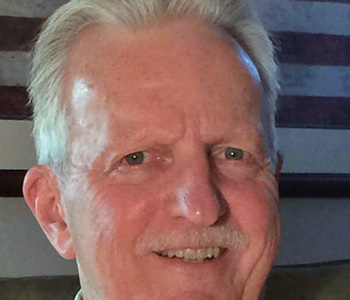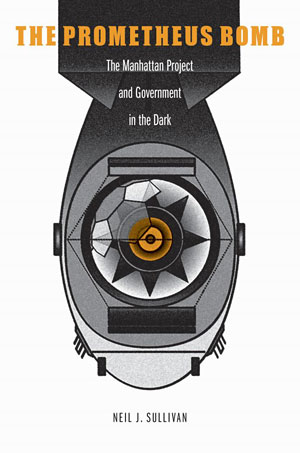
The Prometheus Bomb is an account of the building of the atomic bomb that ended combat in the Pacific theater of World War II. The book focuses on how breakthroughs in quantum physics, barely understood even by Nobel Prize winning scientists, were directed by nonscientists for the purpose of developing a weapon of war. The book is a case study of a larger question: How is it possible to control experts in a democracy when we don’t know what they’re talking about?
The American effort began in 1939 with a letter to Franklin Roosevelt signed by Albert Einstein that warned of the possibility that Nazi Germany would have the resources to build an atomic bomb. The letter further urged that the United States monitor developments, and respond as necessary. The Nazi threat was so ominous that it propelled the Roosevelt administration through doubts about the feasibility of an atomic bomb, concerns about the costs and reluctance to divert resources from other aspects of the war effort.
The Prometheus Bomb maintains its focus on the role of politicians and other government officials as the scientists continued to make progress. It covers the surprisingly complicated and difficult interaction with the British allies, the relative ease with which the Soviet Union placed spies at Los Alamos and elsewhere in the Manhattan Project, the limiting to only seven members of Congress that the price tag would exceed $2 billion.
The decision to bomb two Japanese cities in 1945 is another consideration of the book. In trying to look at the bombings from the perspective of President Harry Truman, the propriety of using the bombs is examined in the context of ending the war. A massive invasion of Japan was scheduled for the fall of 1945. Expectations were that casualties of an invasion of the home islands would be massive. A blockade, a demonstration explosion and other options were considered, and rejected.
Bombing Hiroshima and Nagasaki accomplished the purpose of ending the war in the Pacific, but the price was horrific. Casualties were less than that of some conventional bombings both in Japan and Europe, but the effects of secrecy, expense, suspicion, spy craft and other factors continue to this day.
In the case of the atomic bomb, experts were controlled by the presidential appointment of a number of remarkable figures drawn from the military, academics, business and other professions. They were dedicated to their common purpose, and subordinated egos and professional rivalries to the larger goal. These appointees were loyal to Franklin Roosevelt and Harry Truman, and, with that deference to the American presidents, the values of America’s constitutional democracy prevailed though in a modified form.
While getting my PhD at Brandeis University, I studied public administration and administrative law with Professor Peter Woll. A classic issue in those fields is the control of experts, especially in a legal context. Early in the 20th century, legal theorists began to propose that special courts be created with experts in germane fields put in the position of adjudicating disputes.
These theorists were concerned that judges rarely had scientific expertise. They likely had majored in history, government, English or some other field in the liberal arts. Law school would have taught contracts, torts and procedure, but nothing about radio communications, aviation, food and drug safety and other emerging issues. In effect, giving scientists a bit of a legal education would be easier than trying to teach biology to judges.
These administrative courts, as they were called, never fully developed, but the problem they purported to solve remains to this day. Imagine a judge trying to decide between dueling engineers about the wisdom of granting an injunction to shut down a nuclear power plant for additional inspection. Assuming the highest ethical standards, determination to dispense justice and other qualities essential to due process, the simple ability to determine a proper course for an obscure scientific issue remains daunting.
In the case of the Manhattan Project, administration officials were often very reluctant to pursue the atomic bomb because more promising scientific weapons could be shortchanged with resources squandered trying to build a bomb that could not be built in time to serve any purpose in the war.
Conflicts abounded among officials in the Manhattan Project, but the fear of a German bomb and the urgency of the war effort sustained the effort. When the feasibility of a bomb became more apparent, the organizational apparatus took final shape with the building of the bomb turned over to the Army Corps of Engineers.
A fairly standard practice – a look at the introduction and the last chapter – should give the reader a sense of the book. The introduction provides an overview of the book including its essential question: How can we control experts in a democracy when we don’t know what they’re talking about? The introduction includes a brief discussion of the theme of the book and also its implications.
The last chapter develops the title, what Prometheus has to do with the Manhattan Project. It also reviews some of the points of the book. It examines the environmental damage caused by the development of nuclear weapons. It looks at the American policy on assassination which sent an armed American agent to a lecture in Zurich by Werner Heisenberg, head of the German nuclear program. Had Heisenberg referred to progress on a Nazi bomb, he would have been shot dead on the spot. Secrecy is another consequence of the Manhattan Project. It developed as a result of specialization. People knew their own part of the overall effort, but the need to know was a guiding principle of the endeavor. It is ironic that this concern may have facilitated the penetration of the Project by Soviet spies. Few people had a sufficiently broad perspective to realize that spies roamed Los Alamos.
Otherwise, a curious reader might simply flip some pages, look at the first page of several chapters, check out the photographs, review the index and the references, and look at the handsome fellow on the back flap of the book jacket. I wrote the book with the purpose of making a complex scientific and political project accessible to interested people. Likely the reader would be no less familiar with the physics of the atomic bomb than I was, and I have tried to make the intricate bureaucratic maneuvers clear as well. The reader will have to decide how successful I might have been, but I’m satisfied that this breezy approach will indicate if tackling the book is worthwhile.
The Prometheus Bomb is an extension of teaching. I hope to introduce a question, about experts and democracy, then see it discussed in a variety of forums. Public policy questions that involve science have long been with us, but the future likely will have issues that are barely imaginable.
Bioengineering can let us control nature in unprecedented ways. Hybrid creatures fashioned from different species have already been fashioned. Limits that nature has developed over millions of years may tumble quickly as a result of human design. The natural selection that was critical to the Darwinian understanding of evolution could give way to a renewal of eugenics as we consciously select qualities that may or may not improve our prospects against environmental change.
We may decide to bypass natural phenomena entirely by combining robots with artificial intelligence. Possibly, these entities will be indistinguishable from humans, and possibly they will be considered a human species themselves. Quite likely, we will have to decide if restrictions on the capacities of these robots should be limited. As with Hal in 2001, it might be possible that the robot declines to be limited by our species. Who will decide how far these experiments may proceed? Who will enforce those judgments? How?
Assuming public budgets will support this kind of work, what ethical issues will have to be determined and by what standards? What opportunities will be ignored so that funding for the new projects can proceed?
In another area, what instruments of surveillance will help police departments gather evidence? What threats to civil liberties will those instruments introduce?
The technology is coming. It’s coming in medicine, the food industry, environmental protection, warfare, domestic security, education and other areas of human endeavor. The Manhattan Project was the first of the great scientific policies with cataclysmic potential for our species. That model of decision making diverted money, presumed secrecy, indulged dangerous experiments with an unknowing public nearby, and applied the product of that work to the deaths of nearly 200,000 people. Before the next grave matter is upon us, we should have a better understanding of how we will meet the challenge.


Neil J. Sullivan is a Professor in the School of Public and International Affairs at Baruch College of the CUNY. He has a B.A. from the University of Southern California and a Ph.D. in Politics from Brandeis University. Sullivan teaches courses on American government and public administration. He is the author of five books, including The Dodgers Move West and The Diamond in the Bronx: Yankee Stadium and the Politics of New York. He served from 1998-2008 on the Zoning Board of Appeals of the City of Yonkers, and is currently a member of the Planning Board of Westchester County.